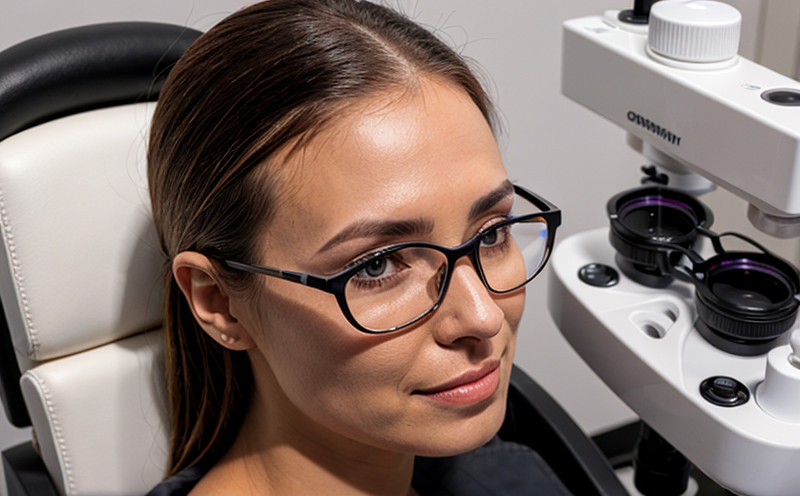EP Microbiological Examination of Non Sterile Ophthalmics Testing
The European Pharmacopoeia (EP) microbiological examination is a critical procedure designed to ensure the safety and quality of non-sterile ophthalmic products. This test evaluates the potential presence of microorganisms that could be harmful if introduced into the eye or surrounding areas. The process involves rigorous laboratory procedures aimed at detecting any viable bacteria, fungi, or other pathogens.
Non-sterile ophthalmic products are those intended for direct application to the eyes without a sterile barrier. These include solutions, lotions, gels, and pastes used in the treatment of various ocular conditions. The EP microbiological examination ensures these products meet stringent quality standards set forth by regulatory bodies like the European Medicines Agency (EMA) and the US Food and Drug Administration (FDA).
The testing protocol typically begins with the collection of samples from the manufacturing facility or supplier. Samples are then transported to a dedicated laboratory under controlled conditions to prevent contamination. Upon arrival, the specimens undergo initial processing, which may include dilution or concentration steps depending on the product type and expected microbial load.
Once prepared, the samples are subjected to various microbiological techniques designed to detect potential contaminants. Common methods include the use of culture media such as MacConkey agar for bacterial growth and Sabouraud dextrose agar for fungal colonies. These media facilitate the isolation and identification of any microorganisms present.
The incubation period varies based on the type of organisms being sought, but it generally spans several days to weeks. During this time, laboratory technicians closely monitor the cultures for any signs of microbial growth. Positive cultures are further analyzed using biochemical tests and possibly molecular techniques to identify specific species.
Upon completion of the examination, detailed reports are generated outlining all findings. These reports serve as crucial documentation for regulatory compliance and internal quality assurance processes. They include information on sample identification, testing methodology, results, and conclusions regarding microbial safety.
The EP microbiological examination is not just a formality but a vital step in safeguarding public health. By adhering to these stringent standards, manufacturers can ensure that their non-sterile ophthalmic products do not pose risks of infection or other adverse effects when used as intended.
For pharmaceutical companies and quality assurance teams, this testing protocol provides peace of mind by verifying product safety throughout the supply chain. It also supports ongoing efforts to improve manufacturing processes and enhance overall product reliability.
Benefits
The EP microbiological examination offers several key benefits to pharmaceutical manufacturers, regulatory bodies, and healthcare providers:
- Enhanced Patient Safety: By ensuring the absence of harmful microorganisms, this test contributes significantly to reducing the risk of ocular infections.
- Compliance with Regulations: Adherence to EP guidelines helps pharmaceutical firms meet stringent regulatory requirements and maintain their market presence.
- Reputation Enhancement: Successful completion of these tests enhances a company's reputation for producing high-quality, safe products.
- Quality Assurance: Regular testing supports continuous improvement in manufacturing processes and product quality.
Industry Applications
The EP microbiological examination finds application across various sectors within the pharmaceutical industry, particularly focusing on ophthalmic products:
Ophthalmic Solutions: This includes solutions used for contact lenses, eye drops, and other ocular treatments. Ensuring these are free from harmful microorganisms is crucial.
Lotions and Gels: Products like lid scrubs or lubricating gels also require thorough microbiological examination to prevent contamination.
Pastes and Ointments: These formulations used in various ocular conditions need rigorous testing to ensure they do not introduce pathogens into the eye.
Why Choose This Test
Selecting the EP microbiological examination for non-sterile ophthalmic products is essential for several reasons:
- Regulatory Compliance: It aligns with international standards like the European Pharmacopoeia, ensuring that your product meets global regulatory requirements.
- Patient Safety: The test helps protect consumers from potential ocular infections and other adverse effects.
- Quality Assurance: Regular testing enhances the reliability of manufacturing processes and maintains high standards of product quality.
- Market Reputation: Demonstrating adherence to these stringent tests can boost your company’s reputation and customer trust.





